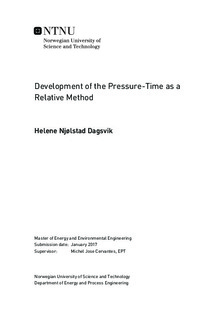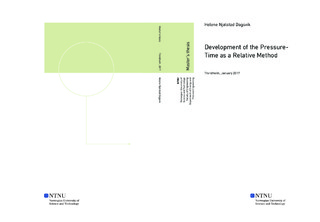| dc.description.abstract | Hydropower has played an essential role in the Norwegian power production over the last century. Approximately 99.9 % of the total production comes from renewable sources, of which hydropower represent 99 %. Changes in runner materials and designs have contributed to a tremendous improvement of the overall turbine efficiency. Several methods of calculating the efficiency exists today, aiming to determine the performance of various turbines under various circumstances. Efficiency measurements in low-head machines have proven to be challenging, as difficult pipe geometry and short water inlets complicate the use of traditional measuring techniques.
The object of this thesis has been to evaluate the pressure-time method as a relative method and examine the method s potential for application in hydraulic machines. Experimental pressure-time measurements were performed at the Waterpower laboratory at NTNU during the spring of 2016. Two flows at approximately 170 and 400 l/s were repeatedly measured and evaluated based on the work by former Ph.D. student P. Jonsson from LTU in Sweden. The relative pressure-time method presented in this thesis has been developed based on the experimental laboratory measurements.
The pressure section used in the laboratory experiments was extended from 4 m to cover the entire area from the open reservoir to a pressure sensor 10 m upstream a closure valve. The geometrical constant was calculated using the laboratory pipe dimensions and incorporated into a developed MATLAB for further calculation of the relative pressure-time flow. Moreover, two numerical MOC codes were developed to verify the experimental results. One represents a simple pipeline with a maximum discharge of 400 l/s, while the second is a complex pipeline with a discharge of 600 l/s.
The relative measurements show good accordance with the electromagnetic flowmeter installed on the test rig. Maximum discharge errors of 3.38 % and 2.56 % were found for the flows at 170 and 400 l/s, respectively. The numerical testing gave promising results with discharge errors of 0.15 % and 0.47 % for the simple and the complex pipeline.
Low random errors over a wide range of repetitions implies consistency between the relative measurements. Moreover, an approach of the pipe factor provided final flows close to the reference flows recorded by the electromagnetic flowmeter. Evaluation of the presented method suggests that a relative pressure-time approach may possibly be relevant for future low-head machine testing. | |

